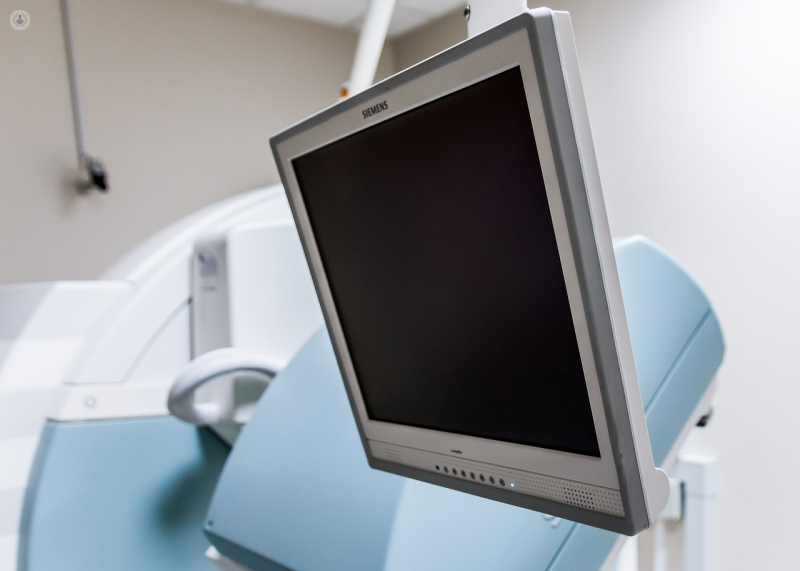


A breast MRI is a type of scan which uses a magnetic field and radio waves to produce detailed images of the tissues inside your breasts. An MRI is carried out by a radiologist, and is a safe procedure.

Why do I need a breast MRI?
A breast MRI is most commonly used in the diagnosis and treatment of breast cancer. There are many stages where an MRI might be useful:
- If you have a family history of breast cancer (such as a mother or sister who has had breast cancer at a relatively young age), you may be recommended for regular breast cancer screening. An MRI is a non-invasive way to carry out this screening and avoid repeated exposure to X-ray radiation.
- An MRI can be used to look more closely at abnormalities in the breasts picked up by another scan such as a mammography.
- If you have already been diagnosed with breast cancer, an MRI can be helpful in examining any tumours more closely.
- MRIs can be useful during treatment of cancer to monitor its effectiveness.
- If you have previously received surgery to remove a tumour, an MRI can examine the site of the tumour to see if it has healed or if the tumour has grown back.
Finally, a breast MRI can be useful in people who have silicone breast implants to check if one of the implants has ruptured.
What to expect in a breast MRI
For a detailed look at how MRI tests work, what you can expect, and how to prepare, see our page on MRI scans.
Not everyone can have a breast MRI. If you are breastfeeding, or pregnant, it can make the MRI pictures difficult to read.
The test can take between 30 and 60 minutes. The length of time depends on whether a dye is used to highlight certain parts of the spine. If a dye is used this will be administered through an IV. This can help doctors understand the images from the scan by highlighting different tissues within the breasts. The dye is usually safe but there may be a risk if you have problems with your kidney. You should make your doctor aware of any preexisting conditions before they give you the IV.
In most MRI scans you lie flat on your back, but with a breast MRI you will lie face down on a platform designed to accommodate your breasts and help you stay still. It’s important to let the radiologist know if you feel uncomfortable, because it’s much easier to remain still during the scan when you can relax.